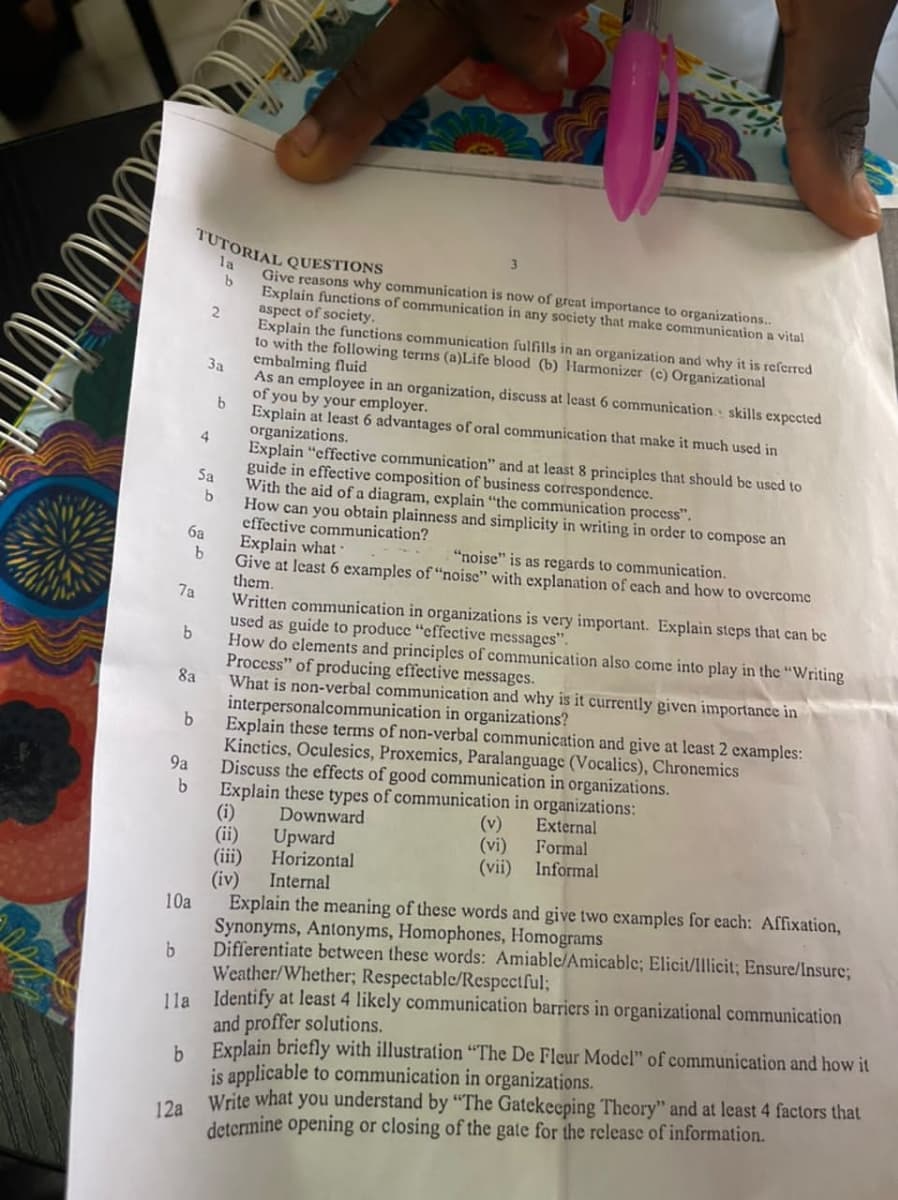ONS Give reasons why communication is now of great importance to organizations Explain functions of communication in any society that aspect of society,
ONS Give reasons why communication is now of great importance to organizations Explain functions of communication in any society that aspect of society,
Management, Loose-Leaf Version
13th Edition
ISBN:9781305969308
Author:Richard L. Daft
Publisher:Richard L. Daft
Chapter17: Managing Communication
Section: Chapter Questions
Problem 2OTJVC
Related questions
Question
100%

Transcribed Image Text:TUTORIAL QUESTIONS
la
Give reasons why communication is now of great importance to organizations..
Explain functions of communication in any society that make communication a vital
aspect of society.
Explain the functions communication fulfills in an organization and why it is referred
to with the following terms (a)Life blood (b) Harmonizer (c) Organizational
embalming fluid
За
As an employee in an organization, discuss at least 6 communication skills expected
of you by your employer.
b.
Explain at least 6 advantages of oral communication that make it much used in
organizations.
Explain "effective communication" and at least 8 principles that should be used to
4.
guide in effective composition of business correspondence.
With the aid of a diagram, explain "the communication process".
How can you obtain plainness and simplicity in writing in order to compose an
Sa
effective communication?
ба
Explain what·
b.
Give at least 6 examples of “noise" with explanation of cach and how to overcome
"noise" is as regards to communication.
them.
Written communication in organizations is very important. Explain steps that can be
7a
used as guide to produce “effective messages".
b.
How do elements and principles of communication also come into play in thc "Writing
Process" of producing effective messages.
8a
What is non-verbal communication and why is it currently given importance in
interpersonalcommunication in organizations?
b.
Explain these terms of non-verbal communication and give at least 2 examples:
Kinctics, Oculesics, Proxemics, Paralanguage (Vocalics), Chronemics
Discuss the effects of good communication in organizations.
9a
b.
Explain these types of communication in organizations:
External
Formal
(vii) Informal
(v)
(i)
(ii)
(iii)
(iv)
Downward
Upward
Horizontal
Internal
(vi)
10a
Explain the meaning of these words and give two examples for each: Affixation,
Synonyms, Antonyms, Homophones, Homograms
Differentiate between these words: Amiable/Amicable; Elicit/lllicit; Ensure/Insure;
Weather/Whether; Respectable/Respectful;
lla Identify at least 4 likely communication barriers in organizational communication
and proffer solutions.
h Explain briefly with illustration "The De Fleur Model" of communication and how it
is applicable to communication in organizations.
Write what you understand by “The Gatekeeping Theory" and at least 4 factors that
12a
determine opening or closing of the gate for the release of information.
Expert Solution
This question has been solved!
Explore an expertly crafted, step-by-step solution for a thorough understanding of key concepts.
Step by step
Solved in 3 steps

Recommended textbooks for you

Management, Loose-Leaf Version
Management
ISBN:
9781305969308
Author:
Richard L. Daft
Publisher:
South-Western College Pub


Management, Loose-Leaf Version
Management
ISBN:
9781305969308
Author:
Richard L. Daft
Publisher:
South-Western College Pub
